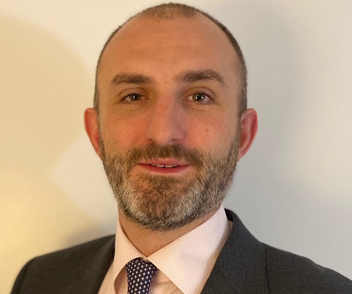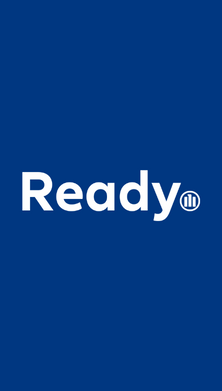1. Preparation
Pre-event preparation and planning can have a big impact on the size of a recall and the extent of financial and reputational damage. “Around 75% of our work is pre-event crisis consultation, testing protocols and recall plans and running scenarios to put the crisis team through its paces,” says Christof Bentele, Head of Global Crisis Management at AGCS.
Product recall insurance gives access to crisis management consultants who are experts, having experienced recalls first hand. For example, AGCS works with red24, a leading risk and crisis management specialist, with operating experience in over 120 countries. These consultants can use this expertise to help a company prepare for a potential situation, putting both recall and crisis management plans in place. Plans need to be implemented and tested at least annually.

“A company that is well prepared will have the information in advance that there is the potential for a recall, such as chemical analysis results and checks etc., and will therefore have time to warn authorities and consumers.
’Pre-incident’ training needs to be fine-tuned or a recall could result in a disaster. In the military, for example, if an army unit is going to do a beach landing it knows there is a chance it could be ambushed, so it prepares accordingly. The same approach needs to apply in a product recall. If unprepared, anything can happen.”
2. Discovery
The speed with which a company identifies and acts upon a potential issue can have a significant impact on the size of a recall and its impact. Every recall is different, but the first few hours are particularly crucial when consumer safety and a company’s reputation are at stake. Discovering a problem does not mean just waiting for a call from the regulator or a supplier. Frequent product testing is critical to identifying potential issues early and therefore limiting the size of a recall – infrequent testing will mean more products find their way to market before a problem is apparent.
Companies should constantly monitor a wide range of indicators to establish if something might have gone wrong as early as possible. For example, monitoring social media can be a good way to find out what customers are saying. Customer
help lines and other forms of feedback can also be tracked to see if complaints have spiked.
“Perception is everything. Everyone wants to see a company do the right thing. And a poorly managed recall can quickly get out of control. So how you handle the initial stages of a recall is critical,” says AGCS’ Eaton.
3. Action

Senior managers will be under immense pressure to take a snap decision, even when all the facts are not known – it may not be clear their product is at fault, or they may not have had time to carry out the necessary testing.
A good well-rehearsed crisis management plan will, however, help make the decision-making process smoother. By working through recall scenarios in advance, the right people should be prepared and in a position to make more
informed decisions.
“Deciding whether or not to trigger a recall is a difficult and time-pressured decision, especially when the company’s brand and reputation hang in the balance. But it is more likely that the right decision will be made if the process is planned and rehearsed,” says Stewart Eaton, Head of Product Recall, Regional Unit London, AGCS.
4. Communication
The hallmark of a good recall is timely and honest communication. Early and informed notification is key, especially given the potential for bad news to go viral via social media.
Relationship management comes to the fore in a recall. Ongoing regular communication with customers and stakeholders, like regulators, will help smooth the process. Recall rates in some sectors remain low, especially food and beverage where products are quickly consumed or disposed of. But good and timely communication should help maximize the recall rate. Today, there are a wide range of communication channels available to inform the public of a recall, but not all companies make full use of them.
“Withholding facts and dishonesty will not make a potential recall go away. It will only make the situation worse,” says John Turner, Director of Crisis Management at McLarens. “Be upfront and honest. No one likes the perception that a company is being underhanded.”
5. Recovery
Recalling a product is a logistical operation, but equally as important is to return the business to normal as quickly as possible. A well-managed recall will proactively work to rehabilitate the brand and return sales to pre-recall levels.
Follow-up communication with customers, directly or through social media, can help restore confidence. Offering customers a reward for their loyalty, such as vouchers or money off future purchases, can also help boost sales. For example, following the recall of Samsung’s Galaxy Note 7 smart phone, the company offered customers a sizable discount on preorders of the Galaxy Note 8 model when it launched a year later.
“Being upfront and transparent is the best policy. If a company says that it is sorry and makes a goodwill gesture then customers are more likely to remain loyal. And these additional costs of rehabilitating the brand can be covered by product recall insurance,” concludes Stewart Eaton, Head of Product Recall, Regional Unit London, AGCS.
The role of insurance - Financial and reputational recall protection
Not to be confused with product liability insurance – which covers the third party liabilities arising from a faulty product – specialist product recall insurance is designed to help manage the considerable costs of a recall and limit reputational damage. Coverage is tailored to meet the needs of different industry sectors. Demand for product recall insurance has been increasing over the past decade with greater awareness of the potential for reputational damage and significant financial loss.
Take-up has been highest in the food and beverage sector, reflecting high levels of regulation and the size of companies relative to the exposures. However, automotive, consumer goods, pharmaceutical and medical device manufacturers are also typical buyers.
Product recall insurance covers the cost of a recall and crisis management consultants. “For most businesses crisis management services can be of huge assistance,” says Marcos Garcia Norris, Crisis Management Regional Practice Group Leader, North America, AGCS. “Few people have the expertise to know what to do in a recall, especially given changing regulations.”
Crucially it can also cover business interruption losses and associated additional costs of working. If, for example, a listeria outbreak forces a food company to close a plant and cease production, insurance can cover the cost of using an alternative plant or competitor to produce the goods.
Product recall insurance typically responds when a product causes actual bodily injury or property damage, or poses an imminent risk of doing so. But it can also be extended in some circumstances to include other triggers, such as malicious
tampering in the food and beverage sector. In the automotive sector, the main trigger is typically bodily injury and property damage, but policies can also include product impairment cover, where a product is recalled because it fails to perform the function for which it was manufactured.
The costs of a recall
The biggest single cost of a product recall event is typically the loss of sales and business interruption, both from the recall itself and reputational damage. Other costs include: identification and tracing of defective products; repair, disposal and replacement; use of third party consultants; laboratory testing and investigative costs; sanitizing contaminated factories; and rehabilitation costs to help
restore the brand.
“When companies are presented with the total cost of a recall, it is typically way above expectation. There is a tendency among some companies to hope for the best and not plan for the worst,” says John Turner, Director of Crisis Management at McLarens. “Managing a product recall is as much about protecting the brand as it is about the logistics of the recall. In some cases we see that the cost of the reputational damage is equal to, or even greatly exceeds, the financial cost of the recall,” says Stewart Eaton, Head of Product Recall, Regional Unit London, AGCS.
Product recall insurance can help protect the brand in a number of ways. The cover gives access to crisis management experts that provide pre-loss planning as well as support and consulting during a crisis. It can also pay for brand rehabilitation and additional expenses aimed at getting product sales back up to pre-recall levels. “If you lose your reputation you won’t have an ongoing business. But product recall insurance is as much about protecting the brand as it is about indemnifying the financial loss,” concludes AGCS’ Eaton.

Types of recall insurance: How they work
Contaminated products
Typical triggers include:
- Accidental contamination - Any accidental or unintentional contamination, impairment or mislabeling of a product, which occurs during its production or distribution
- Malicious product tamper - Any actual, alleged or threatened, intentional, malicious contamination of a product that renders it unfit for intended use/consumption, or creates that impression to the public
- Adverse publicity - The reporting of an alleged, but not actual, accidental contamination or malicious product tamper in the media
- Government recall - Any accidental or unintentional contamination, impairment or mislabeling of a product which occurs during its production or distribution and has been deemed unfit by authorities, resulting in a recall
- Intentionally impaired ingredients - Any contamination or impairment of a product, which occurs as a result of an ingredient supplied to the company by a third party, where such contamination or impairment was intentional or wrongful but not malicious
Examples of insurance coverage:
- Recall costs (first and third party)
- Expenses to inspect, withdraw, destroy and replace the product
- Business interruption (loss of gross profit)
- Rehabilitation costs
- Consultancy costs
- Third party recall liability
- Customer loss of profits
- Unsubstantiated recall costs
- Preparation of crisis management plans
Automotive
Automotive product recalls can have a substantial impact on all elements of the supply chain, from small parts manufacturers to the consumer. The implications of a recall range from loss of reputation to significant, and potentially fatal, financial loss. Product recalls have prompted original equipment manufacturers (OEMs) to demand that parts suppliers reimburse costs caused by a supplier’s defective part.
- Bodily image and property damage - Product recall due to the use of a product that has resulted in bodily injury or property damage, or poses actual and imminent danger of doing so
- Impaired property/product guarantee - Product recall of products which fail to perform the function for which they were manufactured
Examples of insurance coverage:
- First party recall expense
- Third party recall expense
- Repair, replace or refund of products
- Government recall expenses
- Crisis management fees and expenses















